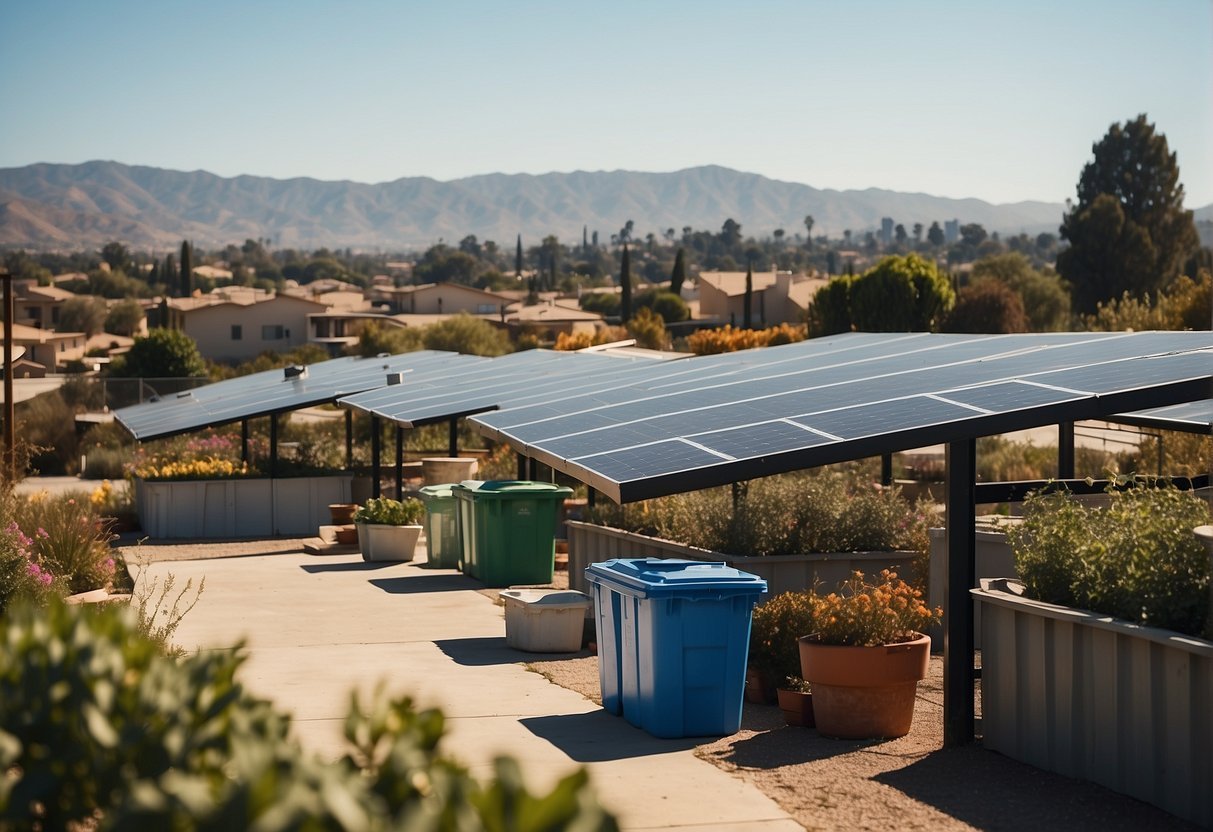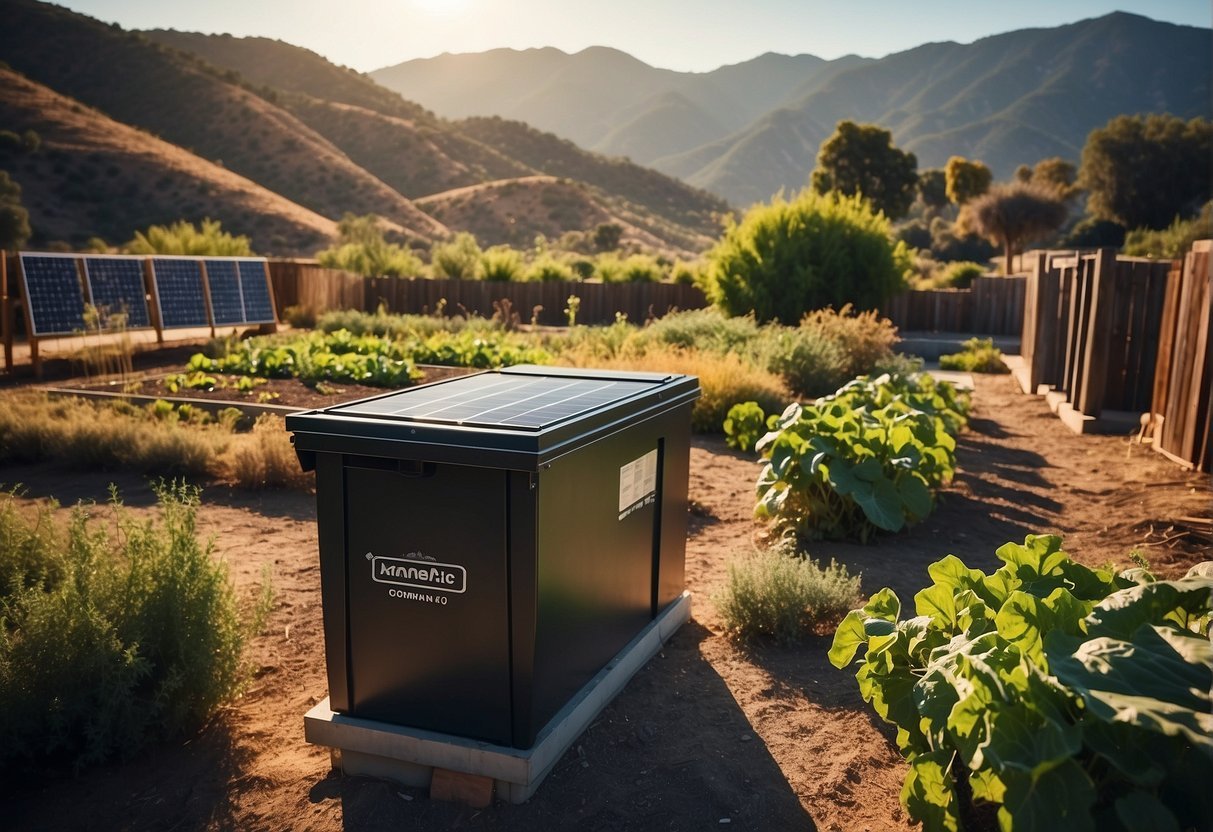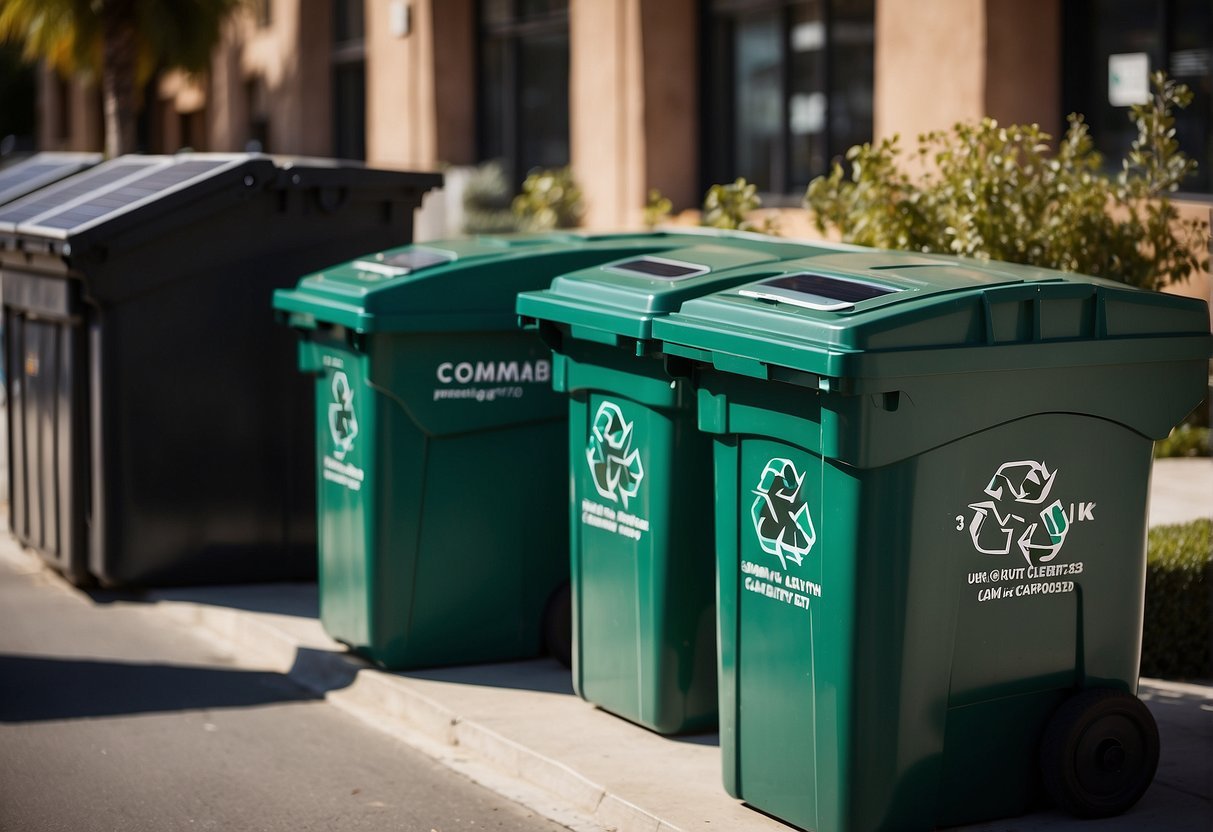Vida Sostenible California – Prácticas pioneras en materia ecológica
Sustainable living in California embodies the spirit of conciencia ambiental, intricately weaving sustainability into the fabric of daily life.
As one of the most progressive states, California leads by example in promoting sustainable living practices, utilising renewable energy sources, and striving for carbon neutrality. The state’s initiatives testify to its commitment to ensuring a healthy environment for future generations.
From the rolling hills of the countryside to the bustling city streets, individuals and communities contribute to the state’s eco-friendly ethos through various practices aimed at reducing waste, minimising pollution, and enhancing overall sustainability.

It’s not just policy driving the green agenda; it’s the people who look beyond the present, considering the long-term impacts of their actions on the environment.
Residents of California actively engage in waste management strategies and adopt eco-friendly transportation options, reflecting a commitment to green living. The push towards sustainable agriculture and gardening practices further highlights the local dedication to nurturing the land responsibly.
As Californians embrace these practices, they forge pathbreaking ways to build sustainable communities anchored in mutual respect for the natural world.
Things to Know About California Before Moving – Key Takeaways
- California is at the forefront of promoting sustainable living with policies targeting carbon neutrality and renewable energy adoption.
- Communities actively embrace waste reduction and efficient resource use, enhancing regional sustainability.
- Progresivo transporte and farming approaches showcase the state’s commitment to ecologically responsible living.
Fundamentals of Sustainable Living

Sustainable living involves practices that reduce environmental impact while maintaining a high quality of life. Focusing on these fundamentals in California ensures you contribute to the planet’s and your community’s health.
Principles of Sustainability
- Circular Economy: Opt for products that align with the circular economy—meaning they can be reused or recycled rather than sent to landfills.
- Local Sourcing: Choose food and products that are locally sourced to minimise carbon footprint from transportation.
- Participación de la comunidad: Engage with sustainability initiatives within your local community to make impactful changes.
Reducing Water Usage
California frequently faces drought conditions, making water conservation crucial.
- Low-Flow Fixtures: Install low-flow toilets and showerheads to reduce water waste.
- Drip Irrigation: For gardens, switch to drip irrigation systems for more efficient water use.
Energy Consumption and Renewables
Energy consumption is a significant contributor to carbon emissions.
- Solar Panels: Install solar power systems to decrease reliance on non-renewable energy sources.
- Electric Vehicles: Utilise electric vehicles to reduce pollution and promote cleaner air.
Waste Management Strategies

California is at the forefront of implementing assertive waste management strategies to minimise ecological footprints and extend the life of landfills. Here, you’ll discover how to participate in recycling and composting efforts and cut down on single-use items.
Recycling and Composting
Recycling is pivotal in California’s waste management plan, seeking to recycle 75% of the waste stream by 2020. Recycling efforts conserve resources and energy by directing materials like paper, glass, and plastic away from landfills. You need to understand the following:
- Packaging material accounts for much of the recyclable waste; always check for recycling symbols.
- Food waste can be combated by composting kitchen scraps and yard waste into valuable soil amendments.
Implementing these habits reduces methane emissions from landfills and feeds back into the cycle of sustainability.
Minimising Single-Use Products
Single-use products, particularly plastic ones, pose a significant challenge. To address this, here are some strategies you can adopt:
- Preference reusable containers and avoid products with excessive packaging.
- Invest in quality items designed to be reused, reducing the demand for throwaway products.
Each action contributes to reducing the waste sent to landfills and helps forge a less reliant future on single-use commodities.
Eco-Friendly Transportation
As California continues to combatir el cambio climático, eco-friendly transportation has become a significant focus. By adopting greener travel methods, you can contribute to public health, reduce emissions, and promote sustainability.
Promoting Electric Vehicles
Electric vehicles (EVs) are at the forefront of California’s push for cleaner transportation. These vehicles are crucial for emissions reductions, producing zero tailpipe emissions. Key points to consider:
- El California Air Resources Board incentivises the adoption of EVs through rebates.
- Infrastructure development, like increasing EV charging stations, is improving EV accessibility.
Sustainable Public Transport
Public transportation in California is being transformed to become more sustainable and environmentally friendly. Your use of transporte público can significantly decrease your carbon footprint.
- Agencies like LA Metro and Santa Monica Big Blue Bus are introducing battery-electric zero-emission buses.
- Policies such as California’s Innovative Clean Transit rule ensure public transit becomes cleaner.
Ciclismo y caminata
For short-distance travel, cycling and walking are the most sustainable forms of transportation. These modes not only reduce emissions but also benefit your health.
- Cities across California are expanding bike lanes and pedestrian paths.
- Walking and cycling into your daily routine promotes salud pública by reducing pollution and encouraging physical activity.
Sustainable Agriculture and Gardening
In California, sustainable agriculture and gardening are critical drivers in the movement towards environmental stewardship and economic resilience. These practices foster healthy ecosystems while supporting the local economy.
Organic Farming Practices
- Soil health is central to organic farming. Farmers will employ crop rotations, green manures, and compost to enrich the soil, avoiding synthetic fertilisers and chemicals.
- Plants grown organically are nurtured in a more natural cycle, contributing to less environmental stress.
Local Food Systems
- The local economy benefits from robust local food systems through job creation and retaining profits within the community.
- Farmers’ markets and community-supported agriculture (CSA) schemes emphasise the importance of agriculture in everyday life, encouraging you to consume locally sourced and seasonal produce.
Supporting Biodiversity
- Biodiversity is essential for resilient farming systems. Integrating hedges and flower strips attracts pollinators and beneficial insects, reducing the need for chemical inputs.
- Farmers are pivotal in preserving native species and genetic diversity, supporting robust ecosystems.
Building Sustainable Communities
In California, the focus on sustainable living is not just about the environment but also about fostering community, equity, and public health through education and shared spaces. Your engagement in these initiatives can help shape the future of how communities thrive in harmony with nature.
Community Engagement and Education
Your community’s involvement is the cornerstone of building a solid foundation for sustainable living. Here’s how you can contribute:
- Participate in events: Engage with local sustainability events to learn and contribute your voice to the collective efforts.
- Educación: Arm yourself with knowledge about practices that benefit both the environment and public health by exploring programs like the Transformative Climate Communities (TCC) Program.
- Colaboraciones: To promote sustainable practices, join local partners such as schools, non-profits, and businesses.
Green Spaces and Conservation
Your local green spaces are vital to public health and the community’s well-being. Support conservation efforts to protect these critical areas:
- Promote green spaces: Advocate for developing and maintaining parks and community gardens.
- Conserve nature: Support initiatives aimed at preserving natural habitats and biodiversity.
- Equity in access: Ensure that conservation benefits all community members somewhat.
Remember, you can influence the direction of your community’s sustainable development through active participation and education. Your actions contribute to a larger coalition to create greener, more equitable spaces for everyone.






